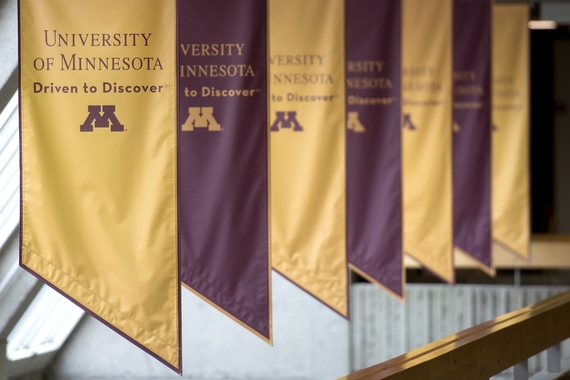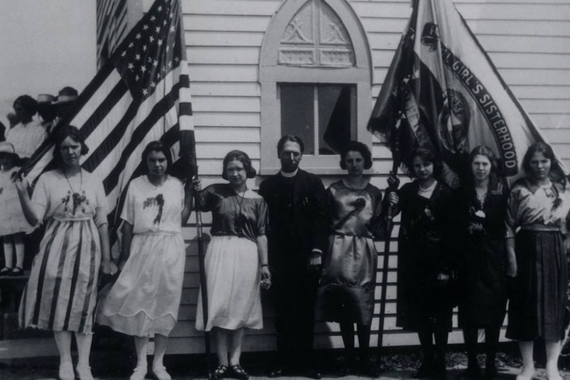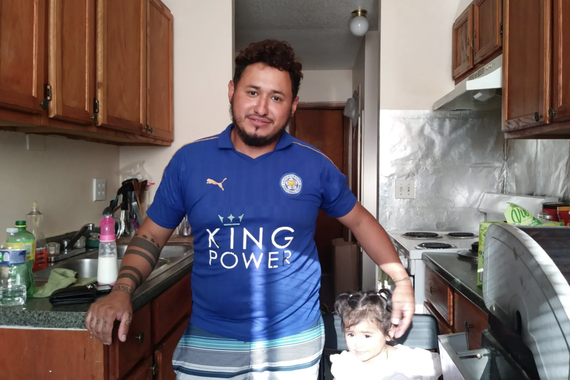Meet Mariam Mohamed
Children’s book author and elementary school teacher Mariam Mohamed will be joining us at the Afromigrancy: History and Memory workshop in April.
Mohamed, the author of Ayeeyo’s Golden Rule, was born to Somali parents in the United Arab Emirates (U.A.E.). She’s been teaching fourth-graders at a predominantly Somali-American school in Minneapolis.
Last year, Mohamed published Ayeeyo’s Golden Rule, a book about a Somali girl who arrives to the U.S. at age nine — and overcomes challenges at school by following her Ayeeyo’s (which means “grandmother” in Somali) words of wisdom. Mohamed wrote the book in response to the lack of children’s books that reflect on the experiences of immigrants and refugees in the school system.
At the Afromigrancy event, Mohamed will talk about her passion for writing and the importance of documenting and preserving the experiences of young immigrants and refugees.
The Immigration History Research Center (IHRC) recently caught up with Mohamed to learn more about her mnemonic strategies and techniques for the work she does. Here is our conversation with Mohamed.
IHRC: Writing one’s own short bio can be an exercise in record-creation. Please describe yourself in a way that you want the general public to know who you are and what you do.
Mohamed: I am a daughter, a wife, a sister, a teacher, an author, and soon-to-be-mother to a baby-girl, Faduma. I identify myself as a Somali-American woman. I am an immigrant born in the U.A.E.
My family chose to come to the United States to provide a better life for their six children and live out the “American Dream.” Even as a child, I’ve dreamt of becoming an educator and influencing the youth. So naturally, that’s the career I pursued. I’ve received my degree in education from Metro State University. I’ve been teaching for four years now, serving as a reading interventions teacher to fourth- and fifth-grade students.
I write in my spare time.
IHRC: L.P. Hartley, a British novelist, once said, “The past is a foreign country.” Do you agree with this pronouncement? When looking back to account for details of what happened during your or family’s journeys to this country, does your or family history of migration appear foreign to you?
Mohamed: I would mostly agree with Mr. LP. Hartley. I understand that everything in our world is drastically changing — from how we interact and communicate with one another to how we dress. It’s true that many decisions we make are based on the world we live in NOW and not the past.
BUT I also don’t think that is the case when we think about immigrants and immigration, at least from my experience. My family’s journey to America is an experience I could never forget. I was five years old at the time I arrived in the U.S., but I remember it like it was yesterday. We are still very deeply rooted in our culture. We speak our language at home; we are practicing Muslims; we are proud immigrants. So, our past still affects how we view the world around us.
I mean, sure I grew up in the states, but I will never forget my family’s struggle and history, which greatly impacted my upbringing. We grew and learned from our migration experience. So, my past will never appear foreign to me.
IHRC: What specific conditions or circumstances in the present cause you to recall memories of your homeland in unexpected ways?
Mohamed: Although I was born in the U.A.E and I have limited memory from there. I identify Somalia as my homeland, though I’ve never been there. All I have are the stories and pictures of Somalia that my parents have shared.
My father is the founder of the Somali Museum of Minnesota, which really helps me take in all the beauty and rich culture of Somalia. I also work at a school, where 99.9 percent of my students are Somali. About 60 percent of those students have migrated or were in refugee camps before they came to my school. Their stories and outlook on life as young as they are, really helps be better connect to my community.
IHRC: If you could take one book — or one enterprise story — with you to 2076, the year of the United States Tricentennial, the dawn of the fourth century of the founding of the United States, what would be your choice? The book, of course, does not have to be written in English.
Mohamed: It would be The Outsiders by S.E. Hinton. This book is my ultimate favorite because it did not only show how divided our society was — and still is — when it comes to our socioeconomic status, but societies across the world. This book spoke to me on a deeper level. It taught me that everyone has demons to battle with and that everyone, no matter their status or how wealthy they are, could be facing a different set of issues. The rich kids felt neglected by their parents, whereas the poor kids had to drop out of school to take care of their loved ones and dealt with their own set of drama at home. This book taught me that the grass really isn’t always greener on the other side and that all humans face some type of issue and turmoil.
IHRC: Let’s say you have been given an opportunity to contribute to a time capsule project to offer future historians raw materials from the past (also known as primary sources) so that they can engage in the craft of historical research and writing about Afromigrancy. The container of artifacts and records will remain sealed and stored safely for 100 years (until 2119) in the basement of the Elmer Andersen Library under the stewardship of the Immigration History Research Center Archives. Choose five items you would donate from your personal, family, and community collections to this project.
Mohamed: I would give:
- The Quran, the holy book of Islam. I hope there would be a box or something to protect it. I wouldn’t want something that meaningful and precious to touch the ground.
- A box of tea. This might seem a silly idea, but my family has had many great, heart-to-heart conversations while drinking shaax [Somali tea]. Tea was and is always a must at every family gathering.
- Hidiyo Dhaqan wear. This is female Somali traditional outfit. Brides and Grooms wear it now for their wedding day.
- A picture of Lido Beach, which is a popular beach in in Mogadishu. Many of my students, family, and friends have had many great memories at this beautiful beach. It shows the fact that some parts of Somalia are still beautiful, though the mainstream media would not show that.
- Prayer mat, which Muslims use to perform their prayers. To pray and have a deeper connection with God, is very important to our Somali culture. Indeed, the Somali culture and Islam do go hand-in-hand and our culture is heavily influenced by the Islamic faith.


